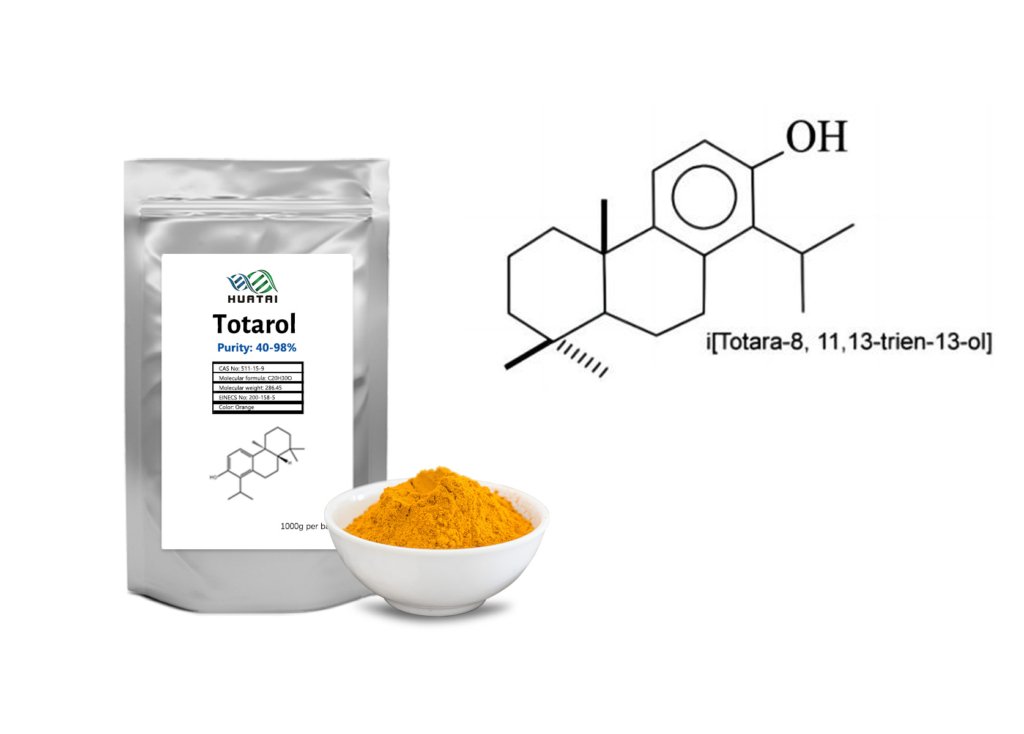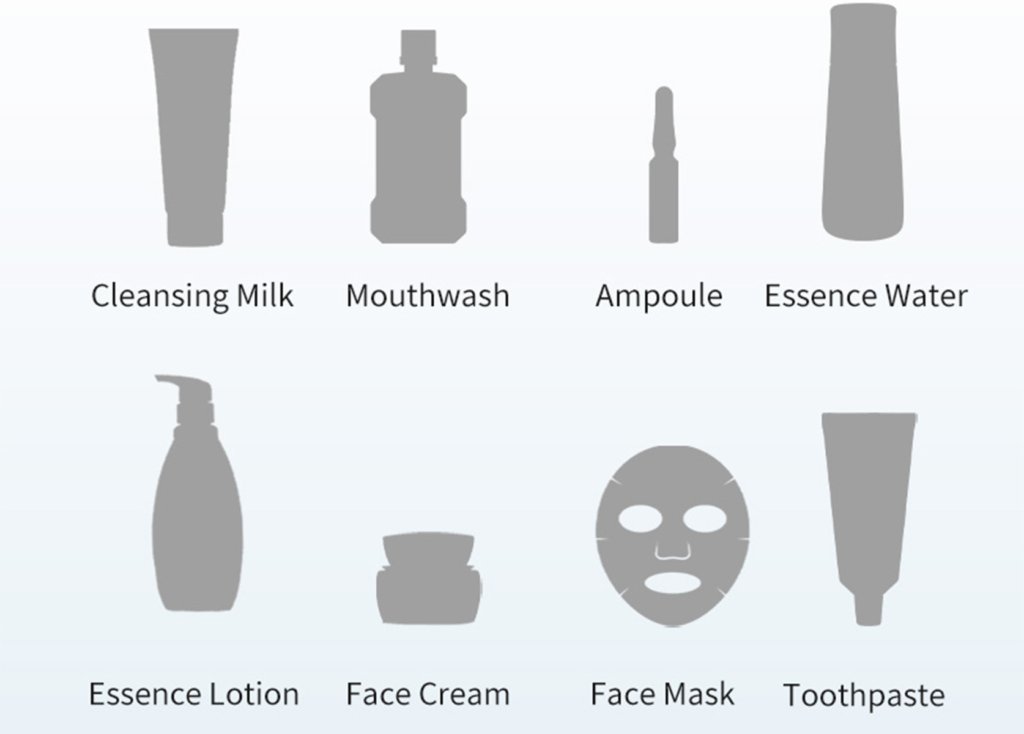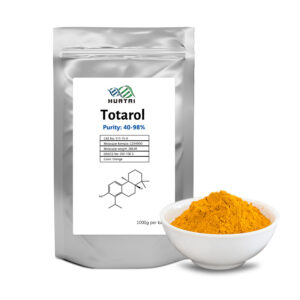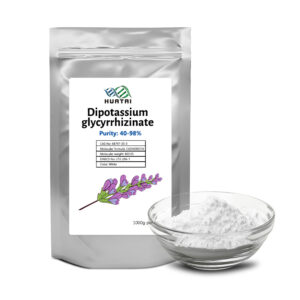
Introduction to Totarol
From the gifts of nature comes Totarol, a natural diterpene extracted from the heartwood of New Zealand’s Podocarpus totara. With its eco-friendly and sustainable supercritical CO₂ extraction process and impressive efficacy, Totarol is fast becoming a favorite in international skincare formulations. Combining natural origin, high potency, and gentleness, research shows Totarol has antioxidant power seven times greater than vitamin E, significant antibacterial activity against Propionibacterium acnes, and the ability to regulate inflammation, slow skin aging, and balance sebum production. Below, we explore Totarol’s five core skincare benefits in detail, supported by case studies and scientific references.
What is Totarol Extract?
Totarol (chemical formula C₂₀H₂₈O₂) is a naturally occurring aromatic diterpene compound originally isolated from the heartwood of the tōtara tree (Podocarpus totara), which is native to New Zealand [Wikipedia].
It contains multiple active hydroxyl groups that can effectively scavenge and neutralize free radicals, demonstrating outstanding antioxidant properties [Totarol].
Totarol is widely used in cosmetics, biopharmaceuticals, and functional foods. Its multifunctionality and natural origin make it a sought-after ingredient among formulators [CreamScan].
Source and Sustainability of Totarol
Totarol is primarily extracted from discarded heartwood of the tōtara tree—such as old fence posts and waste timber—eliminating the need to cut down living trees. This extraction approach aligns with sustainable development principles.
The mainstream method in the industry is supercritical CO₂ extraction, which uses carbon dioxide as both a solvent and a carrier gas under high pressure (approximately 100–300 bar) and moderate temperatures (20–50 °C). This technique allows for highly selective and efficient separation of Totarol, achieving purities of over 95%.
Importantly, this process preserves the natural bioactivity of Totarol while avoiding organic solvent residues, making it a truly green and eco-friendly extraction method.
Chemical Structure and Key Properties
Totarol is classified as an abietane-type diterpene, featuring a tricyclic core structure with multiple hydroxyl groups, which contribute to its strong free radical scavenging ability.
Experimental data show that Totarol exhibits antioxidant activity in oil-based systems up to seven times stronger than Vitamin E, effectively inhibiting lipid peroxidation and reducing intracellular ROS (reactive oxygen species) generation.
In addition to its antioxidant power, Totarol also demonstrates broad-spectrum antimicrobial activity, with effective inhibition of both bacterial and fungal growth in various microbiological assays [CreamScan].
Primary Skincare Benefits of Totarol
Powerful Antioxidant Protection
Totarol neutralizes free radicals, helping to protect the skin from oxidative stress caused by UV exposure and environmental aggressors.Antibacterial & Acne-Fighting
It effectively inhibits Propionibacterium acnes (P. acnes), a primary acne-causing bacterium, helping to reduce breakouts while remaining gentle and non-irritating.Soothing & Anti-Inflammatory
Totarol has been shown to reduce the production of pro-inflammatory cytokines like IL-6 and increase anti-inflammatory markers such as IL-10, rapidly relieving redness and skin sensitivity.Anti-Aging & Firming
By eliminating reactive oxygen species (ROS), Totarol indirectly protects collagen from degradation, inhibits MMP-1 enzyme activity, and stimulates fibroblast collagen production—resulting in firmer, more elastic skin.Oil Control & Sebum Balancing
Totarol gently regulates sebum production, providing long-lasting oil control for oily and combination skin while keeping the skin fresh and comfortable.

Applications and Notable Use Cases of Totarol
Skincare Products
Totarol is widely incorporated into day and night creams, serums, and facial masks by international skincare brands to enhance antioxidant protection and soothe inflammation.Oral Care
Its antibacterial properties make Totarol an effective ingredient in toothpastes and mouthwashes, where it helps reduce bad breath and inhibit plaque formation.Medical Dressings
With its antimicrobial and wound-healing capabilities, Totarol is also being explored in the development of wound dressings and skin-repair ointments.
Product information
| Content | Product Characteristics | Solubility | Recommended Addition Level |
|---|---|---|---|
| 1%–10% | Colorless Transparent Liquid | Soluble in Water | 1.0%–2.5% |
| 1%–10% | Yellow-Orange Liquid | Soluble in Water | 1.0%–2.5% |
| 1%–10% | Colorless Transparent Liquid | Soluble in Alcohol | 1.0%–2.5% |
| 80% | Yellow-Orange Liquid | Soluble in Water | 0.1%–1.0% |
| 99% | White Powder | Soluble in Alcohol | 0.1%–0.5% |
| Storage conditions: It is recommended to store totarol in a light-protected, well-ventilated, and dry, airtight space | |||
| Shelf life: The shelf life of liquid products is 12 months The shelf life of powder products is 24 months |
|||







